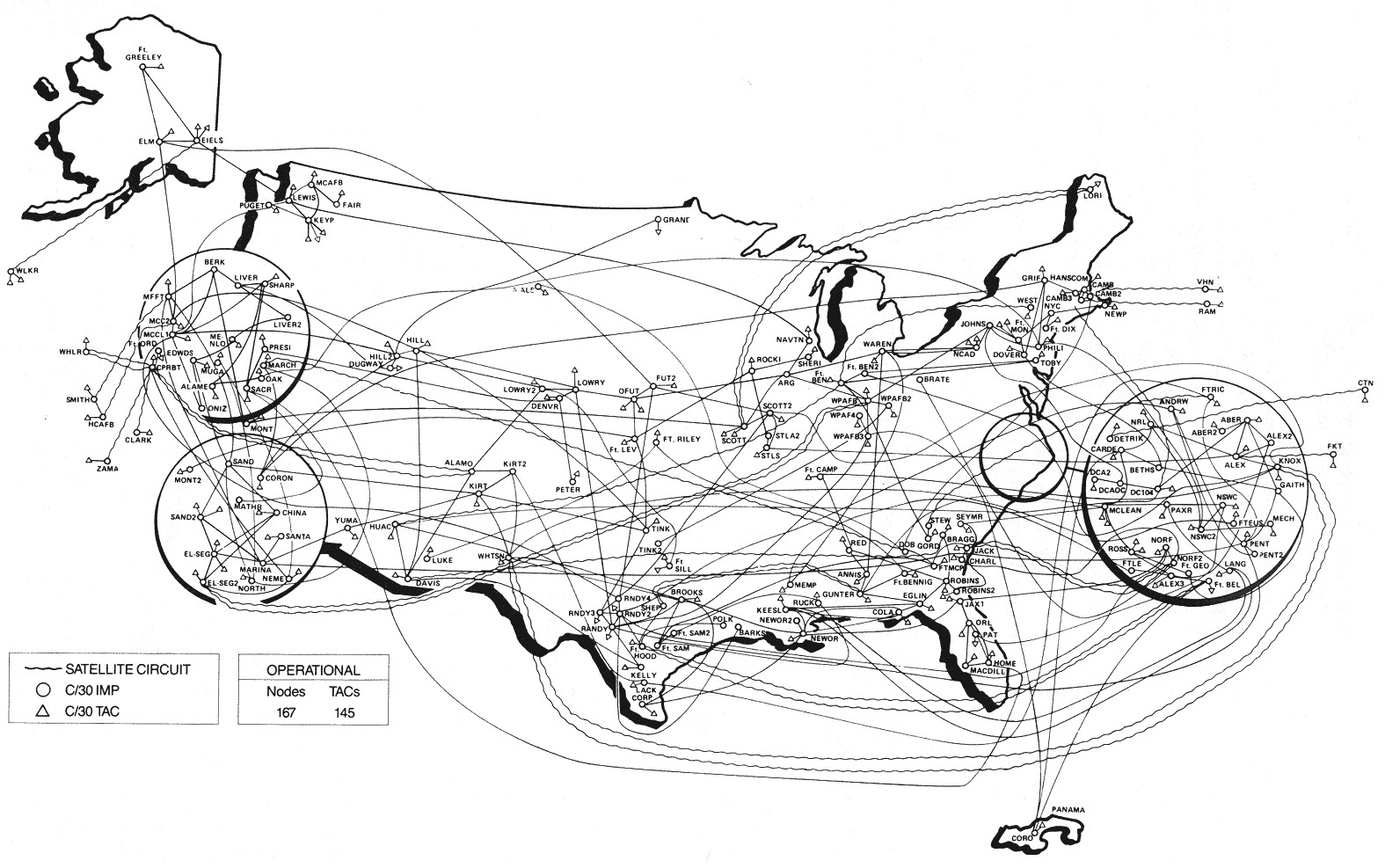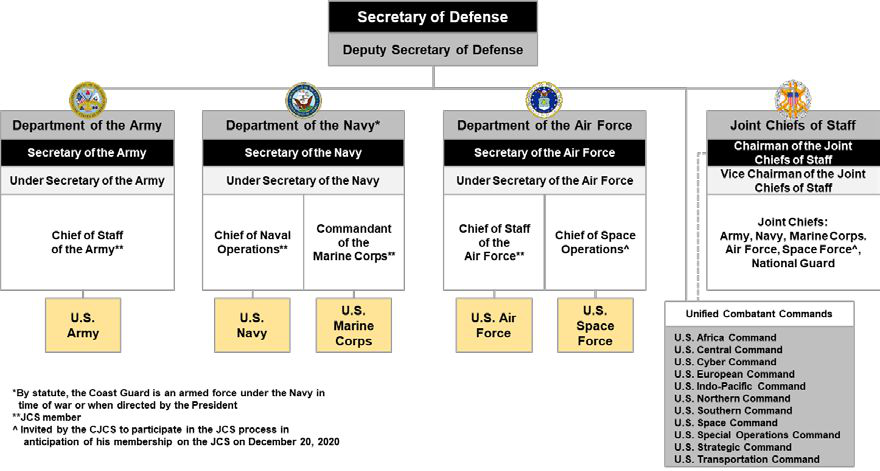|
MILNET
In computer networking, MILNET (fully Military Network) was the name given to the part of the ARPANET internetwork designated for unclassified United States Department of Defense traffic.DEFENSE DATA NETWORK NEWSLETTEDDN-NEWS 26 6 May 1983 MILNET was physically separated from the ARPANET in 1983. The ARPANET remained in service for the academic research community, but direct connectivity between the networks was severed for security reasons. Gateways relayed electronic mail between the two networks. BBN Technologies Raytheon BBN (originally Bolt, Beranek and Newman, Inc.) is an American research and development company based in Cambridge, Massachusetts. In 1966, the Franklin Institute awarded the firm the Frank P. Brown Medal, in 1999 BBN received the ... built and managed both the MILNET and the ARPANET and the two networks used very similar technology. It is also known as "Military Net." During the 1980s the MILNET expanded as part of the Defense Data Network, a ... [...More Info...] [...Related Items...] OR: [Wikipedia] [Google] [Baidu] |
Defense Data Network
The Defense Data Network (DDN) was a computer networking effort of the United States Department of Defense from 1983 through 1995. It was based on ARPANET technology. History As an experiment, from 1971 to 1977, the Worldwide Military Command and Control System (WWMCCS) purchased and operated an ARPANET-type system from BBN Technologies for the Prototype WWMCCS Intercomputer Network (PWIN). The experiments proved successful enough that it became the basis of the much larger WIN system. Six initial WIN sites in 1977 increased to 20 sites by 1981. In 1975, the Defense Communication Agency (DCA) took over operation of the ARPANET as it became an operational tool in addition to an ongoing research project. At that time, the Automatic Digital Network (AUTODIN), carried most of the Defense Department's message traffic. Starting in 1972, attempts had been made to introduce some packet switching into its planned replacement, AUTODIN II. AUTODIN II development proved unsatisfactory, ho ... [...More Info...] [...Related Items...] OR: [Wikipedia] [Google] [Baidu] |
ARPANET
The Advanced Research Projects Agency Network (ARPANET) was the first wide-area packet-switched network with distributed control and one of the first computer networks to implement the TCP/IP protocol suite. Both technologies became the technical foundation of the Internet. The ARPANET was established by the Advanced Research Projects Agency (now DARPA) of the United States Department of Defense. Building on the ideas of J. C. R. Licklider, Robert Taylor (computer scientist), Bob Taylor initiated the ARPANET project in 1966 to enable resource sharing between remote computers. Taylor appointed Lawrence Roberts (scientist), Larry Roberts as program manager. Roberts made the key decisions about the request for proposal to build the network. He incorporated Donald Davies' concepts and designs for packet switching, and sought input from Paul Baran on dynamic routing. In 1969, ARPA awarded the contract to build the Interface Message Processors (IMPs) for the network to Bolt Berane ... [...More Info...] [...Related Items...] OR: [Wikipedia] [Google] [Baidu] |
BBN Technologies
Raytheon BBN (originally Bolt, Beranek and Newman, Inc.) is an American research and development company based in Cambridge, Massachusetts. In 1966, the Franklin Institute awarded the firm the Frank P. Brown Medal, in 1999 BBN received the IEEE Corporate Innovation Recognition, and on 1 February 2013, BBN was awarded the National Medal of Technology and Innovation, the highest honors that the U.S. government bestows upon scientists, engineers and inventors, by President Barack Obama. It became a wholly owned subsidiary of Raytheon in 2009. History BBN has its roots in an initial partnership formed on 15 October 1948 between Leo Beranek and Richard Bolt, professors at the Massachusetts Institute of Technology. Bolt had won a commission to be an acoustic consultant for the new United Nations permanent headquarters to be built in New York City. Realizing the magnitude of the project at hand, Bolt had pulled in his MIT colleague Beranek for help and the partnership betwee ... [...More Info...] [...Related Items...] OR: [Wikipedia] [Google] [Baidu] |
NIPRNET
The Non-classified Internet Protocol (IP) Router Network (NIPRNet) is an IP network used to exchange unclassified information, including information subject to controls on distribution, among the private network's users. The NIPRNet also provides its users access to the Internet. It is one of the United States Department of Defense's three main networks. The others include SIPRNet and JWICS. History NIPRNet is composed of Internet Protocol routers owned by the United States Department of Defense (DOD). It was created in the 1980s and managed by the Defense Information Systems Agency (DISA) to supersede the earlier MILNET. Security improvements In the year leading up to 2010 NIPRNet has grown faster than the U.S. Department of Defense can monitor. DoD spent $10 million in 2010 to map out the current state of the NIPRNet, in an effort to analyze its expansion, and identify unauthorized users, who are suspected to have quietly joined the network. The NIPRNet survey, whic ... [...More Info...] [...Related Items...] OR: [Wikipedia] [Google] [Baidu] |
Internetwork
Internetworking is the practice of interconnecting multiple computer networks. Typically, this enables any pair of hosts in the connected networks to exchange messages irrespective of their hardware-level networking technology. The resulting system of interconnected networks is called an ''internetwork'', or simply an ''internet''. The most notable example of internetworking is the Internet, a network of networks based on many underlying hardware technologies. The Internet is defined by a unified global addressing system, packet format, and routing methods provided by the Internet Protocol. The term ''internetworking'' is a combination of the components ''inter'' (between) and ''networking''. An earlier term for an internetwork is catenet, a short-form of ''(con)catenating networks''. History The first international heterogenous resource sharing network was developed by the computer science department at University College London (UCL) who interconnected the ARPANET with early ... [...More Info...] [...Related Items...] OR: [Wikipedia] [Google] [Baidu] |
United States Department Of Defense
The United States Department of Defense (DoD, USDOD, or DOD) is an United States federal executive departments, executive department of the federal government of the United States, U.S. federal government charged with coordinating and supervising the six U.S. armed services: the United States Army, Army, United States Navy, Navy, United States Marine Corps, Marines, United States Air Force, Air Force, United States Space Force, Space Force, the United States Coast Guard, Coast Guard for some purposes, and related functions and agencies. As of November 2022, the department has over 1.4 million active-duty uniformed personnel in the six armed services. It also supervises over 778,000 National Guard (United States), National Guard and reservist personnel, and over 747,000 civilians, bringing the total to over 2.91 million employees. Headquartered at the Pentagon in Arlington County, Virginia, just outside Washington, D.C., the Department of Defense's stated mission is "to provid ... [...More Info...] [...Related Items...] OR: [Wikipedia] [Google] [Baidu] |
Computer Security
Computer security (also cybersecurity, digital security, or information technology (IT) security) is a subdiscipline within the field of information security. It consists of the protection of computer software, systems and computer network, networks from Threat (security), threats that can lead to unauthorized information disclosure, theft or damage to computer hardware, hardware, software, or Data (computing), data, as well as from the disruption or misdirection of the Service (economics), services they provide. The significance of the field stems from the expanded reliance on computer systems, the Internet, and wireless network standards. Its importance is further amplified by the growth of smart devices, including smartphones, televisions, and the various devices that constitute the Internet of things (IoT). Cybersecurity has emerged as one of the most significant new challenges facing the contemporary world, due to both the complexity of information systems and the societi ... [...More Info...] [...Related Items...] OR: [Wikipedia] [Google] [Baidu] |
Gateway (telecommunications)
A gateway is a piece of networking hardware or software used in telecommunications networks that allows data to flow from one discrete network to another. Gateways are distinct from routers or switches in that they communicate using more than one protocol to connect multiple networks and can operate at any of the seven layers of the OSI model. The term ''gateway'' can also loosely refer to a computer or computer program configured to perform the tasks of a gateway, such as a default gateway or router, and in the case of HTTP, gateway is also often used as a synonym for reverse proxy. It can also refer to a device installed in homes that combines router and modem functionality into one device, used by ISPs, also called a residential gateway. Network gateway A network gateway provides a connection between networks and contains devices, such as protocol translators, impedance matchers, rate converters, fault isolators, or signal translators. A network gateway requires the es ... [...More Info...] [...Related Items...] OR: [Wikipedia] [Google] [Baidu] |
Electronic Mail
Electronic mail (usually shortened to email; alternatively hyphenated e-mail) is a method of transmitting and receiving Digital media, digital messages using electronics, electronic devices over a computer network. It was conceived in the late–20th century as the digital version of, or counterpart to, mail (hence ''wikt:e-#Etymology 2, e- + mail''). Email is a ubiquitous and very widely used communication medium; in current use, an email address is often treated as a basic and necessary part of many processes in business, commerce, government, education, entertainment, and other spheres of daily life in most countries. Email operates across computer networks, primarily the Internet access, Internet, and also local area networks. Today's email systems are based on a store-and-forward model. Email Server (computing), servers accept, forward, deliver, and store messages. Neither the users nor their computers are required to be online simultaneously; they need to connect, ty ... [...More Info...] [...Related Items...] OR: [Wikipedia] [Google] [Baidu] |
Wide Area Networks
A wide area network (WAN) is a telecommunications network that extends over a large geographic area. Wide area networks are often established with leased telecommunication circuits. Businesses, as well as schools and government entities, use wide area networks to relay data to staff, students, clients, buyers and suppliers from various locations around the world. In essence, this mode of telecommunication allows a business to effectively carry out its daily function regardless of location. The Internet may be considered a WAN. Many WANs are, however, built for one particular organization and are private. WANs can be separated from local area networks (LANs) in that the latter refers to physically proximal networks. Design options The textbook definition of a WAN is a computer network spanning regions, countries, or even the world. However, in terms of the application of communication protocols and concepts, it may be best to view WANs as computer networking technologies used ... [...More Info...] [...Related Items...] OR: [Wikipedia] [Google] [Baidu] |
History Of Telecommunications In The United States
History is the systematic study of the past, focusing primarily on the human past. As an academic discipline, it analyses and interprets evidence to construct narratives about what happened and explain why it happened. Some theorists categorize history as a social science, while others see it as part of the humanities or consider it a hybrid discipline. Similar debates surround the purpose of history—for example, whether its main aim is theoretical, to uncover the truth, or practical, to learn lessons from the past. In a more general sense, the term ''history'' refers not to an academic field but to the past itself, times in the past, or to individual texts about the past. Historical research relies on primary and secondary sources to reconstruct past events and validate interpretations. Source criticism is used to evaluate these sources, assessing their authenticity, content, and reliability. Historians strive to integrate the perspectives of several sources to develop a ... [...More Info...] [...Related Items...] OR: [Wikipedia] [Google] [Baidu] |





